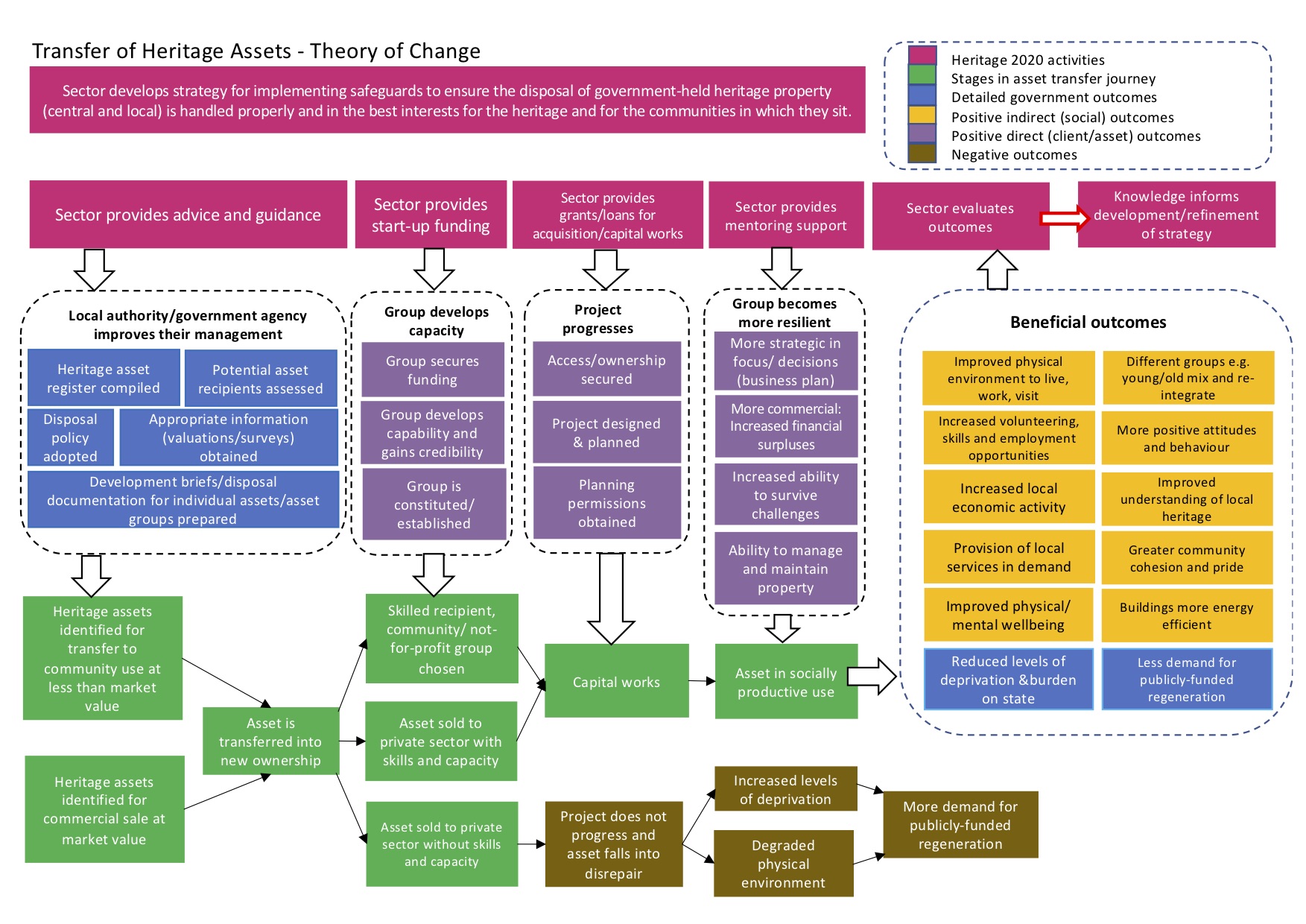Home > Heritage 2020 > Heritage 2020 Topics > Transfer of Heritage Assets
The issue of asset transfer was identified by the Constructive Conservation and Sustainable Management working group as a way of addressing several of the Heritage 2020 framework priorities, such as new systems of heritage protection, managing heritage at risk and contributing to the growth agenda. It’s also a prime area for collaborative working, for example between local authorities, developers and community groups.
The Heritage 2020 Constructive Conservation and Sustainable Management (CCSM) group have used a Theory of Change Model (developed by the Architectural Heritage Fund) to identify which parts of the asset transfer process are well-covered, and where there are gaps.
The Theory of Change (pdf) identifies different activities to ensure that disposals of publicly-owned heritage assets are handled properly and in the best interests of the heritage assets and the communities in which they sit. It shows the outcomes – for society, for clients, for the assets and for government, associated with the activities.

In 2016 a Heritage 2020 consultation tested demand for a package of guidance and support for local authorities, private developers and community groups. Respondents were almost equally divided in their awareness/lack of awareness of available guidance leading the group to conclude that better sign-posting of existing guidance (rather than more guidance) is a priority.
“Business planning for community groups or charities taking on a heritage asset; considerations for ensuring a site and its operating model remain viable in the long-term; more advice on meanwhile uses; advice to Local Planning Authorities on how to support groups to whom they have divested assets; advice to Local Planning Authorities on when to step in.” (Heritage 2020 consultation response, 2016)
How to Care for Places and People: Towards a common standard in Historic Environment Conservation Services & Skills Summarises a range of measures and indicators on heritage and planning outcome quality.
Why planning authorities must have conservation skills Provides a framework of statutory, regulatory and related considerations.
Managing Local Authority Heritage Assets: Advice for Local Government
Pillars of the community: the transfer of local authority heritage assets
Historic Environment Local Management Training Programme Provides free training on managing the historic environment for individuals working in local authorities, regional agencies and national organisations.
Understanding the Community Right to Bid
Video explaining Assets of Community Value
Multiple or complex asset transfers: how to manage the process
Ownership and managements of assets
BRICKwork programme The programme originally ran from 2014 to 2018 and the website is now an archive of how-to guides and resources for community groups seeking to rescue historic buildings.
Bringing together senior members of staff from public and non-government bodies to work collaboratively on strategic matters for the historic environment sector.